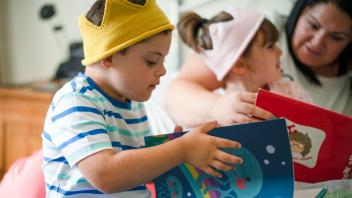The images from Japan’s earthquake and tsunami continue to pour in and over us and there’s the specter of further disaster. What can we offer our children to help them cope?
Hope. Hope that the actions of an individual can have a positive impact. Hope that better things will come.
Kimiko Kajikawa’s Tsunami (Philomel) with powerful collage illustrations by Ed Young is based on a real 19th century Japanese hero who felt the earthquake and was able to save hundreds of townspeople. Like the rice farmer in the book, he was able to find a way to get people’s attention to get them to higher ground and away from the fast-approaching tsunami.
Last year, Haiti experienced a huge earthquake. And while the recovery is still anything but complete more than a year later, a recent book by Jesse Joshua Watson, Hope for Haiti (Putnam), reminds children that hope, laughter, and even play can survive.
Sharing books with their static images allows ideas and words to emerge slowly and give a young listener time to absorb them.
But more; taking time to share the experience in a book allows children to absorb more than the horror. It lets them see that hope survives.

